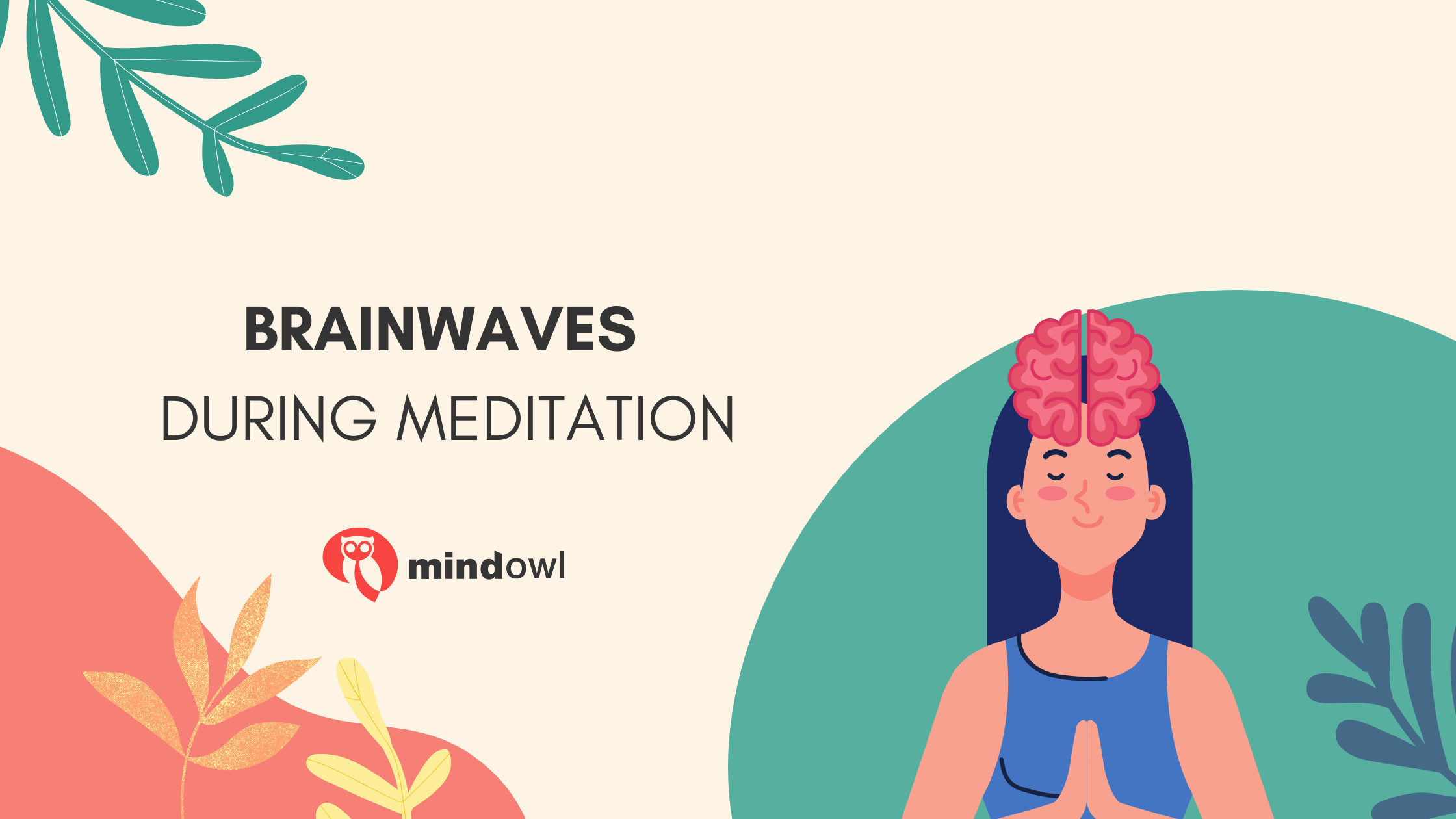Ever wondered what happens inside your head to make you pick up a drink, look out the window, or read an article? What brain functions cause you to click on this blog post, see these odd shapes on the screen, interpret them as words, and then extract meaning from those words? What determines our emotions, our likes and dislikes, and why do we think of our life in terms of good days and bad days? These are big ideas, but when viewed through a psychological lens, mindfulness meditation can help provide answers to some of these questions. So how can we manipulate our minds to encourage positive thoughts and good moods? The answer can be found by looking at brainwaves.
What are Brain Waves?
Our brains are very complex structures. Brain activity is responsible for instructing us when to eat, causing physical movement, and letting us know when to feel joy, fear, or sadness. Sections of the brain such as the prefrontal cortex are connected with complex decision-making and planning, while the frontal cortex is associated with speech, expression, or ocular movement. Brainwaves, on the other hand, are electrical pulses responsible for communication.
Our brain transmits and interprets information through the firing of electrical signals between neurons, or brain cells. The frequency of this electrical activity is then measured as brainwaves, which can be viewed on an electroencephalogram (or EEG) — more neurons being fired means a higher brainwave frequency, with fewer neurons showing a lower frequency. This may seem a bit complicated and out of your control, but the truth is our brains are highly malleable. This means that not only can we shift from state to state with relative ease, we can also manipulate our brain waves in order to impact our mental processes and switch between moods and emotions.
To help you understand how this relates to your life, let’s look at a day in the life of your brain, starting by considering the main types of brain waves and what they do.

Types of Brain Waves
Beta
Think of that first sip of coffee in the morning; you’re up, you’re awake, and you’re beginning to plan the day ahead. When the brain is aroused and actively engaged in mental activities in this way, it generates beta waves. They allow us to focus on goal-orientated tasks, like work, driving or household chores. For most of our waking hours, our brain waves, therefore, function at beta frequency. These beta waves are of relatively low amplitude and are the fastest of the four different brainwaves. The frequency of beta brainwaves ranges from 15 to 40 cycles a second.
Beta waves are characteristics of a strongly engaged mind. For example, a person in active conversation or debate would be in beta, as would someone making a speech, teaching a class, or hosting a talk show. However, this frequency can also create problems. Remaining at the right level of beta frequencies can increase efficiency; however, overly high beta frequencies can lead to stress and anxiety, while if the frequency drops too low, it puts us at risk of depression.
Alpha
Imagine you have returned home from work, completed all your chores and are finally able to sit down and relax for the rest of the evening — this is the optimal time for alpha activity. Alpha brain waves become present when we reach this sort of state of relaxation. We are still alert and able to function, but we do not feel stress or pressure related to what we are doing. Alpha waves are there when you’re awake and experiencing plenty of mental activity, without being particularly stressed about completing a certain task or attending an event. The physical and mental state brought about by this type of brain wave is also sometimes known as the relaxation response.
Theta
After you have completed your day’s work and have enjoyed some relaxation time, you’ll gradually become ready to go to bed. Theta waves begin to take hold in these moments before sleep when you are daydreaming, dosing off or reaching a state of deep relaxation. Theta brainwaves can sometimes occur during the day (I’m sure you’ve found yourself drifting off at your desk occasionally…), or even during deep sleep; however, they mainly arise in the moments before falling asleep at night.
Delta
Delta waves take action when we fall asleep — often, this type of brain wave is associated with deep or dreamless sleep. In these states, our neural processes slow down considerably; there are no tasks to be completed, and our brains are not trying to make sense of the world around us. Instead, we are able to focus on what we have seen and heard during the day. It is at this point that our body heals, the data we received via our senses during the day is consolidated and information we have collected is stored in our memory. This is why sleep is so important to the learning process — it is when our minds make sure we retain what we have been thinking about during our waking hours.
Gamma
Experienced meditators are more likely than most to experience the impressive power of gamma waves. Gamma brain waves have a faster frequency than any other type of brain wave, and they also seem to be the key to enlightened states of mind and inner peace. Upon studying the brainwaves of meditators, using scalp electrodes, neuroscientists have noted that gamma brainwaves are far more prevalent in their minds than in the minds of non-meditators. Meditation masters are also far more likely to access gamma state during everyday life, outside of formal practice. This article by Lola Till explores the transformative power of gamma brain waves in more detail.
The mind of a meditator
Long-term meditators can further increase their understanding of meditation experiences by discovering and reflecting upon the importance of brainwaves. We’ve now highlighted how each set is essential to our functioning as healthy human beings; however, there are some states that are more desirable than others. We do not need to be in a state of extreme stress to complete our work, as it can have a negative impact on our health. Instead, we should strive to establish a state of mind that allows us to be present and peaceful in the moment — this can actually change the physical structure of our brains. One way to view meditation is as a form of mental training that allows you to reach this state more consistently.
When it comes to all the positive effects of meditation we hear about, people aren’t always convinced. Yes, it’s true that different types of meditation cause different results — but how can it be that just by sitting still and observing the now, we can lessen chronic pain, reduce stress and anxiety, alleviate depression and transcend to another level of awareness? It’s understandable that you may be sceptical about claims like this, especially if you have little evidence of these benefits other than a person’s subjective experience. However, there is actually plenty of physical evidence that when we meditate, our brain waves change, as does the brain’s physical structure.
The practice of meditation encourages the presence of gamma and alpha brainwaves. The mind of a meditator, therefore, has a more relaxed but aware state of mind, and less attachment to the sense of self or the part of our mind with focused attention on future plans or past events. Long-term practitioners of meditation will not hold on strongly to any perception of their own identity, viewing themselves (and the wider world) as it is, without judgement. These beneficial effects can be produced by a variety of meditation practices.
Another term for this mental practice is a flow state. A flow state describes a state of consciousness in which we are hyper-focused, with all sense of self and time melting away. This state of consciousness is associated with musicians, athletes and artists, who reach a zone of concentration in which they do not have to put any visible effort into their activity. The practise of meditation, which increases gamma oscillations in the brain, is also capable of creating flow states. Experienced meditators have had extensive mental training in non-distraction, focused attention and present moment-centeredness, meaning that they are more likely to experience flow states.

How does meditation affect our brains?
Previous studies into the effects of meditation on our brains indicate that when our brain is functioning in gamma frequencies, it is able to create new pathways in the brain for neurons to flow between. This indicates that our information is being communicated in a different way than normal. What’s more, meditation can reduce the size of the amygdala, the region of the brain responsible for fear, stress and anger. This brain function change can only be seen as a positive.
The brain works like a muscle. If you went to the gym every day for a month, and at the gym, you only lifted weights with your left arm, the muscle on that arm would be much bigger and stronger than your right. The same is true when it comes to mental training. We used to believe that the brain reached maturity at around 18 years of age and stopped developing; however, the truth is that it is always capable of change and development, depending on what actions it repeats. For example, advanced practitioners of meditation experience a shrinking amygdala due to less and less stress-inducing thoughts, judgement of others, or fear of the uncontrollable. When repeated, all of these actions result in a reduced fear centre in the brain. And you don’t have to dive into deep meditations or retreats with Tibetan monks in order to achieve these goals. A variety of meditation practices can produce positive results, including awareness exercises, transcendental meditation, noting-based practices, or compassion meditation.In short, meditation causes our brains to change. If you’re still feeling sceptical, there even products available for at-home brain wave measurement. The Muse EEG headband records the wearer’s brainwaves, providing concrete evidence of the changes that occur in our brains when we meditate. But the strength and durability of this change depend on how dedicated you are to your meditation practice. Again, the more we repeat an action, the more noticeable the result is. Struggling to integrate meditation practise into your daily routine? Check out our free eBook for some definitive solutions to all your meditation woes.
MindOwl Founder – My own struggles in life have led me to this path of understanding the human condition. I graduated with a bachelor’s degree in philosophy before completing a master’s degree in psychology at Regent’s University London. I then completed a postgraduate diploma in philosophical counselling before being trained in ACT (Acceptance and commitment therapy).
I’ve spent the last eight years studying the encounter of meditative practices with modern psychology.


One thought on “Brainwaves during meditation”